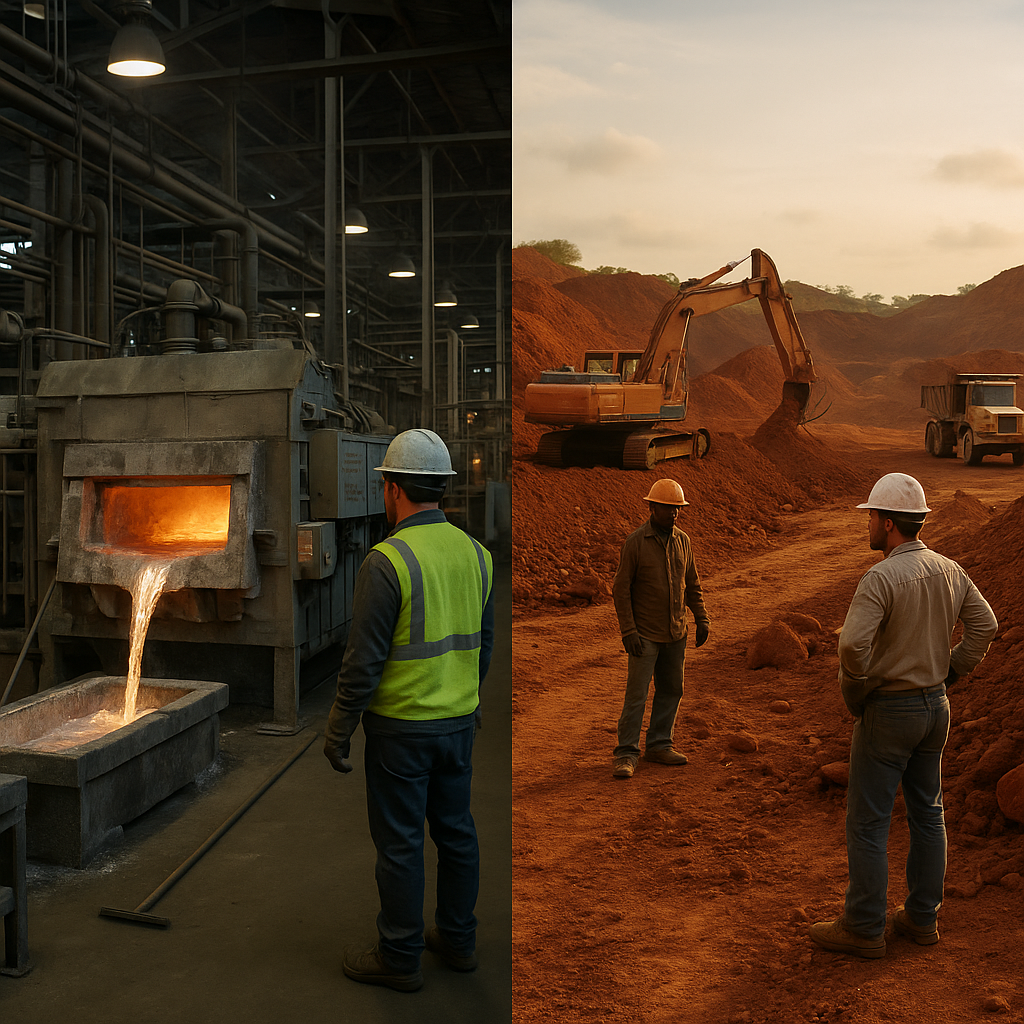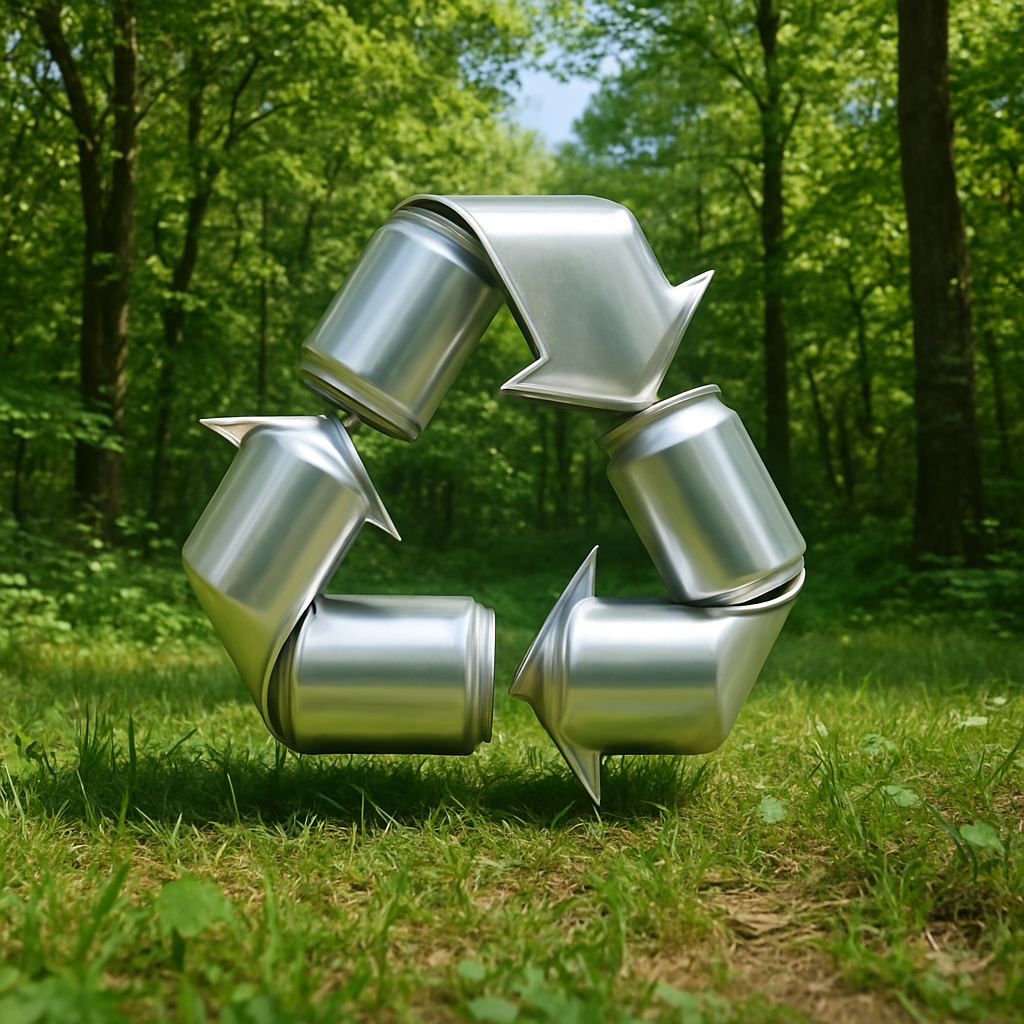5901 Botham Jean Blvd, Dallas, TX 75215
What is Aluminum Recycling and Why Analyze Its Costs?
June 5, 2025Aluminum recycling transforms used scrap aluminum into new products, playing a crucial role in modern waste management and industrial sustainability. Its ability to be recycled indefinitely without losing quality makes it exceptionally valuable in today’s resource-conscious world.
Cost analysis of aluminum recycling offers essential insights for businesses and municipalities. By evaluating economic factors alongside environmental impacts, decision-makers can assess both the financial and ecological benefits of recycling compared to primary production. This analysis highlights why recycled aluminum dominates the U.S. market, accounting for over 80% of domestic aluminum production.
The data is compelling. Recycling aluminum uses about 5% of the energy required for primary production from bauxite ore, leading to significant cost savings and reduced carbon emissions. With the U.S. aluminum industry collecting more than double the amount for recycling today than in the 1980s, understanding these cost dynamics is increasingly vital for sustainability planning.
How Does Recycled Aluminum Production Compare to Primary Production?

Recycled aluminum production significantly outperforms primary aluminum production in both energy efficiency and cost-effectiveness. The energy consumption for recycled aluminum ranges from just 5-10 MJ/kg, compared to primary aluminum production, which requires 200-250 MJ/kg.
Energy Savings
The energy disparity between recycled and primary aluminum production is substantial. Recycling aluminum uses only about 5% of the energy required for primary production, translating to approximately 95% energy savings when choosing recycled over virgin aluminum.
According to the International Aluminium Institute, the energy-intensive nature of primary aluminum stems from the extraction and processing of bauxite ore. Recycled aluminum bypasses these energy-hungry steps entirely.
The energy requirements for producing recycled aluminum include transportation, pretreatment, and remelting of scrap. These processes combined account for less than 5% of the energy needed for primary production.
Production Cost Benefits
The cost differences between recycled and primary aluminum are equally significant. Recycled aluminum production costs range from $0.20 to $0.50 per kilogram, while primary aluminum production costs between $2.50 and $3.50 per kilogram.
This cost differential is due to lower energy requirements and simplified processing. Recycled aluminum requires fewer resources and simpler manufacturing steps, whereas primary production demands extensive mining, refining, and smelting operations.
The economic advantages of recycled aluminum extend beyond direct production costs. Lower energy consumption means reduced operational expenses for manufacturers, allowing companies to achieve better profit margins while offering more competitive pricing.
Environmental Impact Comparison
The environmental benefits parallel the energy savings. Primary aluminum production in 2022 generated approximately 15.1 tonnes of CO2 equivalent per tonne of aluminum produced, while recycled aluminum production created only about 0.52 tonnes of CO2 equivalent per tonne.
This represents a carbon footprint reduction of nearly 97%. The environmental impact reduction is directly due to lower energy consumption and avoiding resource extraction activities.
When measuring by primary energy demand, global primary aluminum production requires about 186 gigajoules per tonne, while conventional aluminum recycling from scrap needs only 13.6 gigajoules per tonne.
[[artifact_table]]Comparison of Energy, Costs, and Environmental Impact Between Primary and Recycled Aluminum[[/artifact_table]]Businesses increasingly factor these environmental benefits into their sustainability goals. Many industries now actively seek recycled aluminum to reduce their carbon footprint while simultaneously cutting costs.
What Are the Environmental Benefits of Aluminum Recycling?

Aluminum recycling provides substantial environmental benefits by conserving energy. The process uses 95% less energy than producing aluminum from raw bauxite, significantly reducing greenhouse gas emissions. While primary aluminum production generates 16-20 kg CO2/kg, recycled aluminum production emits only 0.5-1.0 kg CO2/kg—a reduction of up to 95%.
This significant emissions reduction is crucial in combating climate change. The aluminum industry accounts for about 1% of global greenhouse gas emissions, making recycling programs vital for environmental sustainability. Each ton of recycled aluminum prevents around 9 tons of CO2 emissions from entering the atmosphere.
Another major environmental benefit is natural resource conservation. Aluminum production starts with bauxite mining, which causes environmental disruption through deforestation, habitat destruction, and soil erosion. By reducing the need for new mining operations, recycling helps preserve ecosystems and biodiversity.
Recycling aluminum also reduces waste in landfills, where aluminum items would otherwise remain for centuries without decomposing. This waste reduction conserves landfill space and prevents potential soil and water pollution from aluminum compounds leaching into the environment.
Life-cycle assessments clearly show the environmental advantages of recycled aluminum. Products made from recycled materials consistently have lower carbon footprints across their entire life cycle. Beverage cans made from recycled aluminum produce up to 95% fewer emissions than those made from virgin materials, creating a substantial positive environmental impact when multiplied across billions of cans produced annually.
The environmental benefits extend beyond emissions reduction. Recycling aluminum conserves water resources as well, with recycled production requiring much less water than primary production. This water conservation is increasingly important as many regions face growing water scarcity issues.
Collectively, these environmental benefits make aluminum one of the most valuable materials to recycle. Its infinite recyclability without quality degradation means each recycling cycle delivers these environmental advantages repeatedly, creating a sustainable material cycle that helps protect our planet’s resources for future generations.
How Does Aluminum Recycling Impact Different Industries?

The automotive industry is a major beneficiary of aluminum recycling. Using recycled aluminum in vehicle manufacturing can reduce production costs by up to 30% compared to using new materials. This cost efficiency makes aluminum an attractive choice for automakers seeking competitive advantages.
Weight reduction is another significant benefit for the automotive sector. Vehicles with recycled aluminum components are lighter, leading to improved fuel efficiency. Recycling rates for aluminum in automotive applications often exceed 90%, highlighting the industry’s commitment to sustainable material management.
Aerospace Applications
The aerospace industry relies on recycled aluminum for both structural components and interior parts. The material’s excellent strength-to-weight ratio makes it ideal for aircraft construction where weight is critical. Recycled aluminum provides the needed durability for aerospace applications while significantly lowering production costs.
Recycled aluminum components retain their essential performance characteristics, crucial in an industry where material failure is not an option. The closed-loop recycling process allows aluminum to be recycled indefinitely without losing its properties.
Wind Energy Benefits
The renewable energy sector, particularly wind energy, uses recycled aluminum for its durability in harsh environments. Vestas’ North Sea turbine report shows that recycled aluminum components retain 95% of their original strength even after 10 years in harsh marine conditions.
This durability makes recycled aluminum ideal for wind turbine components that must withstand extreme weather. The lightweight nature of aluminum also simplifies the installation and maintenance of tall turbine structures, adding operational benefits.
Aluminum recycling supports the circular economy principles that the renewable energy sector aims to embody. The material requires only 5% of the energy needed to produce new aluminum, significantly reducing the carbon footprint of wind energy infrastructure.
Economic and Environmental Advantages
Across all these industries, recycled aluminum offers substantial cost savings. The energy efficiency of aluminum recycling translates to lower production expenses, with companies saving up to 95% of the energy required to produce new aluminum.
The environmental benefits complement these economic advantages. Industry recycling efforts in the U.S. save more than 90 million barrels of oil equivalent annually, reducing energy consumption and carbon emissions across automotive, aerospace, and renewable energy sectors.
Material conservation is another key impact. About 75% of all aluminum ever produced remains in use today, according to industry data. This statistic shows how aluminum recycling creates a virtually permanent material supply for various industries.
[[artifact_table]] Comparative Benefits of Recycled Aluminum Across Industries [[/artifact_table]]What Are the Future Trends and Challenges in Aluminum Recycling?
The aluminum recycling industry is undergoing significant transformation due to recent technological innovations that are enhancing efficiency and addressing longstanding challenges.
We will explore key developments and obstacles influencing the future of aluminum recycling.
Technological Breakthroughs Transforming the Industry
Advanced sorting technologies are among the most significant advancements in aluminum recycling. Near-infrared (NIR) systems can now identify different aluminum alloys with remarkable precision, allowing recyclers to sort mixed scrap into specific alloy groups.
Laser-induced breakdown spectroscopy (LIBS) further enhances sorting capabilities by analyzing the elemental composition of aluminum scrap in real-time. This technology uses lasers to measure the unique light signature of materials, enabling more accurate sorting of aluminum alloys and resulting in higher-grade recycled materials.
Automation is revolutionizing recycling facilities with robotic systems equipped with artificial intelligence that can identify, sort, and process aluminum scrap faster than traditional methods. These systems reduce labor costs while improving throughput and efficiency. The integration of machine learning allows for continuous improvement in sorting accuracy over time.
The Shift Toward Circular Economy Models
The aluminum industry is increasingly adopting circular economy principles, aiming to eliminate waste by keeping materials in use for as long as possible. Aluminum, which can be recycled indefinitely without losing quality, fits perfectly within this model.
Companies are developing closed-loop recycling systems where production scraps are immediately recycled back into the manufacturing process, reducing waste and lowering production costs. The automotive industry has been particularly successful in implementing closed-loop aluminum recycling.
Policy developments are accelerating this transition, with many governments implementing extended producer responsibility (EPR) regulations. These policies require manufacturers to manage the end-of-life of their products, incentivizing designs that prioritize recyclability.
Carbon pricing mechanisms also influence the industry. As carbon taxes and emissions trading systems become more common, the cost advantage of recycled aluminum—which requires only 5% of the energy needed for primary production—becomes even greater.
Market Challenges and Economic Hurdles
Despite technological advancements, market fluctuations continue to challenge the aluminum recycling industry. The price of recycled aluminum is tied to broader commodity markets, which can be volatile due to global economic conditions, trade policies, and changing demand patterns.
When primary aluminum prices drop, the economic incentive for recycling diminishes, complicating long-term planning for recycling operations. Many facilities struggle to maintain profitability during market downturns.
Supply chain complexities further complicate the economics of recycling, as collection and transportation costs represent a significant portion of expenses. These costs vary by region, impacting overall profitability.
Quality Control and Material Consistency
Maintaining consistent quality in recycled aluminum is a persistent challenge due to diverse sources of aluminum scrap resulting in materials with varying compositions. This variability can make it difficult to produce recycled aluminum that meets specific industry standards.
Contamination poses another challenge, as consumer products often combine aluminum with other materials, making separation difficult. Paint, coatings, and attached components can introduce impurities that affect the quality of recycled aluminum.
The growing complexity of aluminum alloys used in modern products further complicates recycling efforts. Each alloy has a unique composition, and mixing different alloys can result in recycled material with suboptimal properties. While sorting technologies have improved, completely separating all alloy types remains challenging.
The aluminum industry is exploring standardization initiatives to address these issues. By developing common standards for recycled aluminum, the industry hopes to improve market acceptance and expand applications for recycled materials.
Regulatory and Logistical Obstacles
Regulatory frameworks for recycling vary significantly across regions, creating challenges for companies operating in multiple markets. Compliance costs can be substantial, particularly for smaller recycling operations.
Transportation logistics represent another obstacle, as moving aluminum scrap from collection points to recycling facilities involves substantial costs and carbon emissions. Rural and less-populated areas often lack the infrastructure needed for efficient recycling.
International trade in scrap aluminum faces additional barriers, with tariffs, import restrictions, and quality standards differing between countries. Recent policy changes in major importing countries have disrupted established recycling supply chains.
Despite these challenges, regulatory trends generally favor increased recycling. Growing environmental awareness is driving policies that promote sustainable materials management, likely creating new opportunities for the aluminum recycling industry.
The future of aluminum recycling will be shaped by how the industry navigates these trends and challenges. Companies that successfully adopt new technologies while developing strategies to manage market volatility will be best positioned for growth.
Addressing quality control issues through better separation techniques and standardization will be crucial for expanding markets for recycled aluminum. As regulatory frameworks continue to evolve, the industry must remain adaptable while advocating for consistent, science-based policies.
The aluminum recycling landscape will continue evolving through technological innovation and shifting market dynamics. While challenges persist, the environmental and economic benefits of aluminum recycling ensure its growing importance in our resource-conscious world.
Conclusion: The Economic and Environmental Value of Aluminum Recycling

Aluminum recycling exemplifies sustainable resource management. With energy savings of up to 95% compared to primary production, the economic benefits are significant, leading to lower production costs and reduced operational expenses for manufacturers. The environmental advantages are equally notable, with each ton of recycled aluminum saving 9 tonnes of CO2 emissions and 4 tonnes of bauxite ore, greatly reducing the industry’s carbon footprint.
The recycling process generates jobs in the collection, sorting, processing, and manufacturing sectors. It also ensures a steady supply of raw materials, strengthening supply chain resilience in an unpredictable global market. As technological innovations enhance sorting techniques and melting efficiency, the aluminum recycling industry becomes increasingly effective, despite challenges like material contamination and market fluctuations.
For your business recycling needs or to learn more about sustainable metal management solutions, contact Okon Recycling at 214-717-4083.
